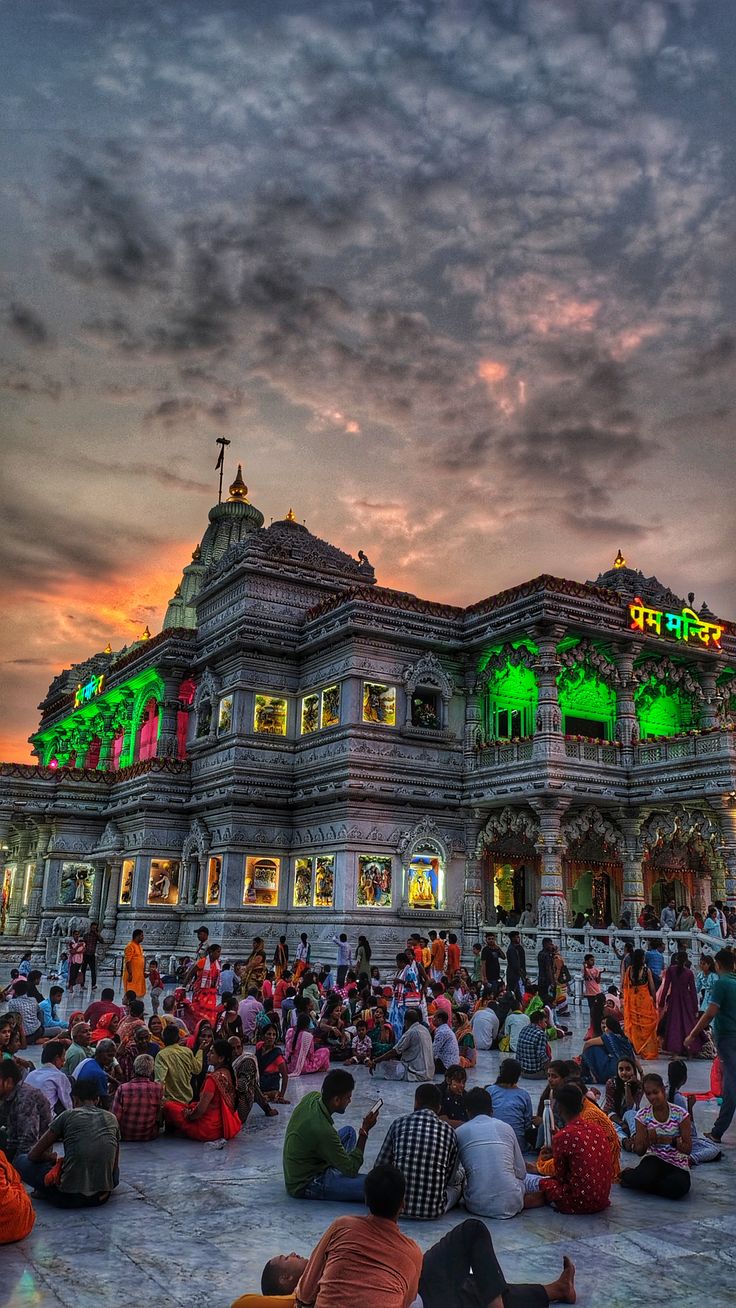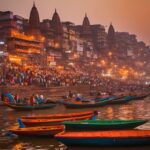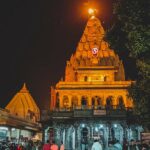Vrindavan: The Sacred Land of Eternal Devotion
Introduction
Vrindavan, located in the Mathura district of Uttar Pradesh, India, is a sacred city known for its deep spiritual significance, rich history, and vibrant cultural heritage. Revered as the place where Lord Krishna spent his childhood, Vrindavan attracts millions of devotees each year who come to immerse themselves in its divine atmosphere. With its temples, ghats, festivals, and legends, Vrindavan has become a symbol of devotion, love, and mysticism. In this article, we explore the biography, history, daily life impacts, significance, and societal contributions of Vrindavan, offering a comprehensive overview of why it remains one of the holiest places in India.
1. The Mythological and Historical Roots
It is deeply embedded in Hindu mythology, particularly in the tales of Lord Krishna. According to Hindu beliefs, Vrindavan was the place where Krishna spent his early years, playing with his friends, tending to the cows, and performing miracles. The town is surrounded by lush forests and sacred groves, known as Vṛndāvana in Sanskrit, where Krishna is said to have danced the Raas Lila with his beloved Gopis (cowherd girls).
Historically, It has been a center of devotion, especially to Lord Krishna and his various forms. The town has been mentioned in ancient scriptures like the Bhagavata Purana, which recounts Krishna’s divine childhood exploits and his love for Radha, his eternal consort. Over the centuries, Vrindavan has grown into a hub for Bhakti (devotion) and Sankirtan (devotional chanting), attracting poets, saints, and devotees.
2. The Spiritual Significance
It’s primary significance lies in its connection to Lord Krishna. It is said that anyone who visits Vrindavan and spends time in its sacred places will experience divine blessings and spiritual purification. The numerous temples and sacred sites around Vrindavan, such as Banke Bihari Temple, ISKCON Temple, and Radha Raman Temple, are dedicated to Krishna and Radha, with worshippers seeking solace and spiritual enlightenment through prayer, meditation, and chanting.
Vrindavan is also significant for its connection to the Bhakti Movement, which emphasized personal devotion to God over ritualistic practices. The city is home to many revered saints and poets, such as Tulsidas, the author of the Ramcharitmanas, and Surdas, whose devotional poetry continues to inspire millions.
3. Daily Life: A Blend of Devotion and Simplicity
Life in It is deeply influenced by spirituality and devotion. The town is bustling with activity, with thousands of devotees visiting the temples, participating in religious processions, and performing rituals throughout the day. The air is filled with the sounds of devotional songs, the rhythmic beat of drums, and the chanting of mantras, creating an atmosphere of serenity and devotion.
Locals and pilgrims alike wake up early in the morning to take a dip in the sacred Yamuna River, which flows through Vrindavan. The ghats along the river are often filled with people offering prayers and performing arti (ritualistic fire worship). The streets of Vrindavan are lined with small shops selling religious items such as Tulsi leaves, incense, and Krishna idols, while the aroma of prasad (offering food) fills the air.
For the local community, Vrindavan’s daily rhythm revolves around spiritual practices. Many residents engage in kirtan (devotional chanting), bhajan (singing religious hymns), and mantra meditation to deepen their connection with the divine. Pilgrims often stay in the town for extended periods, engaging in these practices and visiting the many sacred sites.
4. The Festivals: Celebrating Divine Love
It is famous for its vibrant celebrations, especially those that honor Lord Krishna and Radha. Holi, the festival of colors, is one of the most famous festivals in Vrindavan. The town comes alive with people playing with colors, singing, and dancing in honor of Krishna’s playful nature. Janmashtami, the celebration of Krishna’s birth, is another major event, with devotees fasting, praying, and chanting throughout the night until the moment of Krishna’s birth is commemorated at midnight.
Radha Ashtami, which celebrates the birth of Radha, and Govardhan Puja, which marks Krishna’s lifting of the Govardhan Hill, are also significant festivals in Vrindavan. During these celebrations, the town is adorned with decorations, and special rituals and processions take place, attracting large numbers of devotees from across India and abroad.
5. Societal Contributions and Cultural Impact
It has had a profound impact on Indian society, particularly in the realm of devotional music, art, and literature. The Raas Lila, which is the divine dance of Krishna, is performed in Vrindavan as part of various festivals and rituals, and it has inspired countless works of art, dance, and music. The region is also renowned for its Kathak dance tradition, which often depicts episodes from Krishna’s life.
The influence of Vrindavan is also seen in literature. Many famous poets and saints have written about their experiences in Vrindavan, expressing the deep emotional and spiritual connection they felt with Krishna. These works continue to be celebrated and studied, keeping the town’s spiritual and cultural legacy alive for future generations.
6. Facts and FAQs
- Why is Vrindavan considered sacred?
It is sacred because it is the place where Lord Krishna spent his childhood and performed many divine acts. It is considered a place where one can experience Krishna’s divine presence and attain spiritual liberation. - What is the significance of the Yamuna River in Vrindavan?
The Yamuna River is considered holy, and it is believed that bathing in its waters purifies the soul. Many pilgrims come to Vrindavan to take a dip in the river as part of their spiritual practice. - What are some important temples in Vrindavan?
Notable temples include Banke Bihari Temple, Radha Raman Temple, ISKCON Vrindavan, and Prem Mandir. Each temple is dedicated to Lord Krishna or Radha and offers a place for worship, meditation, and spiritual gatherings. - When is the best time to visit Vrindavan?
The best time to visit Vrindavan is during the cooler months, between October and March, when the weather is more pleasant. However, the town is busiest during festivals like Holi and Janmashtami.
7. Importance to Society
It continues to play an essential role in preserving India’s spiritual and cultural heritage. It serves as a beacon for those seeking spiritual growth and a deeper connection with the divine. The town’s enduring traditions, festivals, and practices help foster unity, love, and devotion, making Vrindavan a timeless symbol of faith and cultural pride.
Conclusion
It is a city that embodies the essence of divine love and devotion. Its historical, spiritual, and cultural significance has made it an essential part of India’s religious landscape. Whether through its sacred temples, vibrant festivals, or deep-rooted traditions, Vrindavan continues to inspire millions, offering a space for peace, reflection, and spiritual enlightenment. In a world that is constantly changing, Vrindavan remains a timeless haven for those seeking a deeper connection with the divine.










